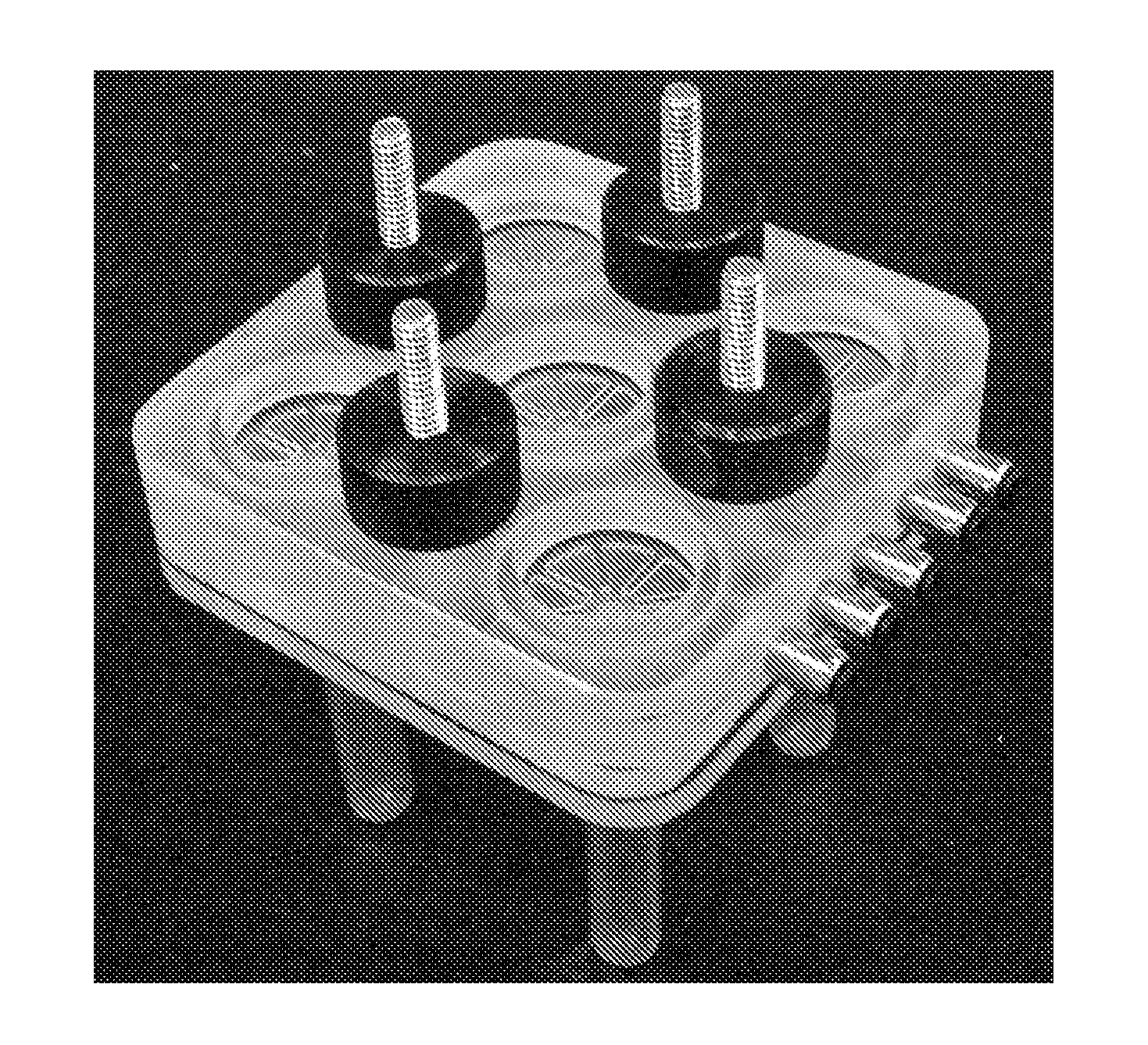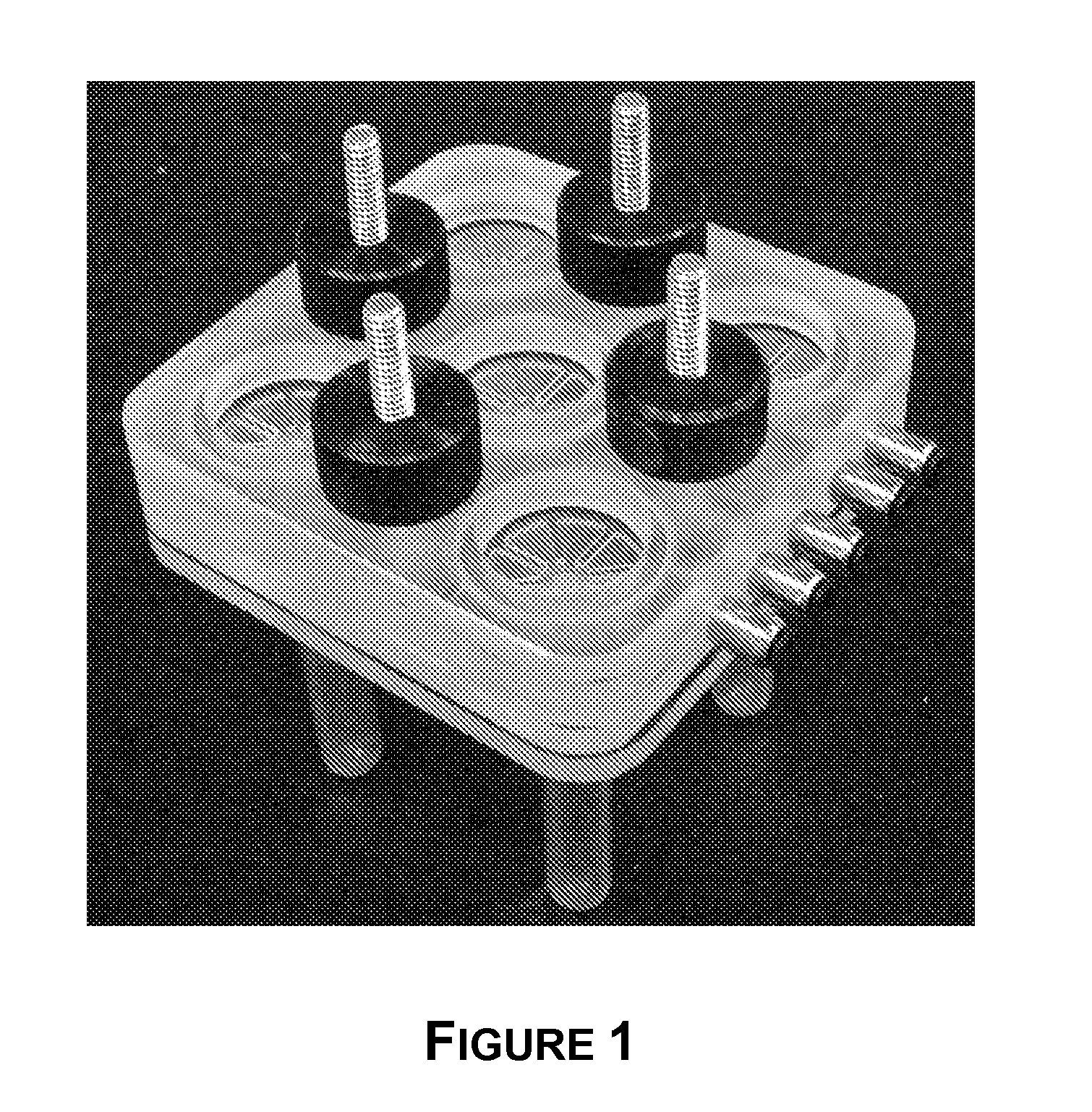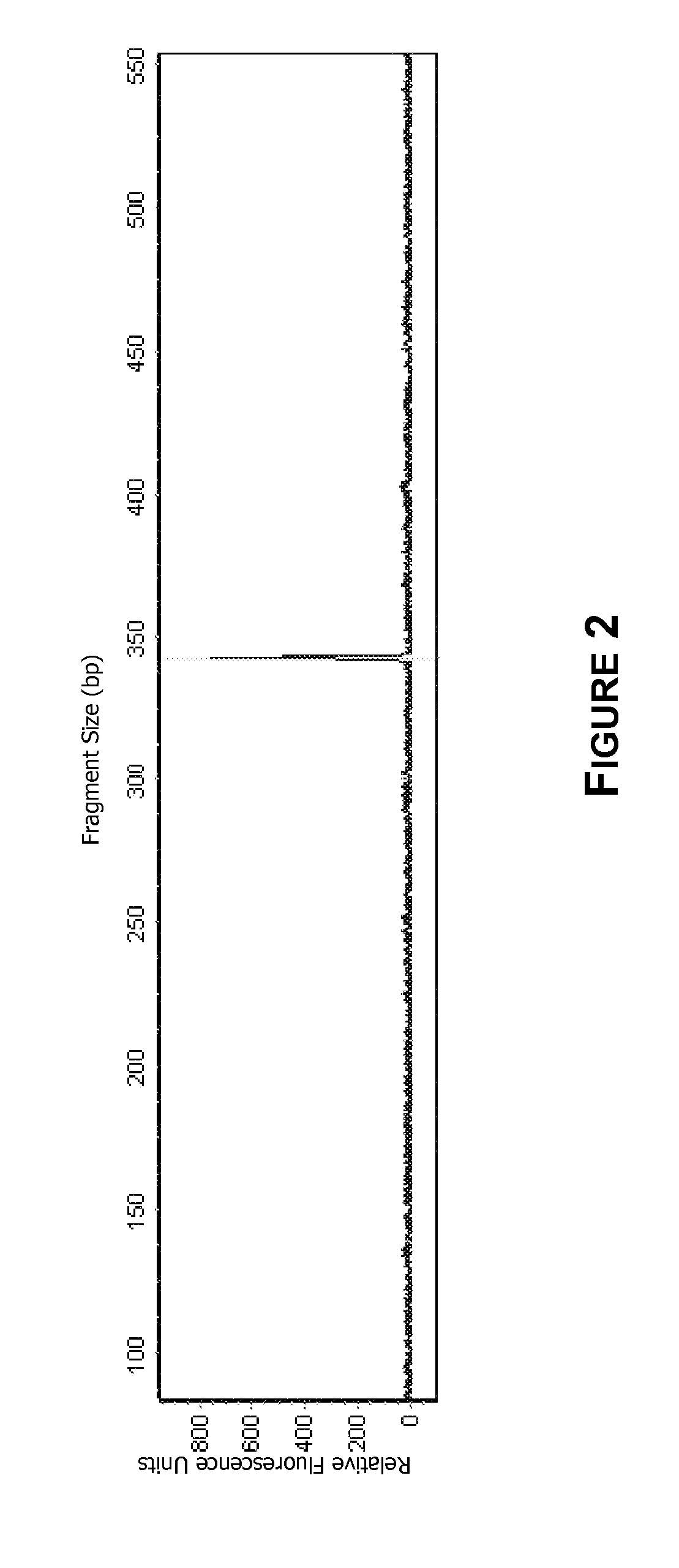Nucleic Acid Purification
a technology of nucleic acid and purification method, applied in the field of nucleic acid purification, can solve the problems of time-consuming and laborious procedures, cumbersome equipment, and inability to purify unprocessed nucleic acids from clinical or environmental samples (or from environmental samples collected manually)
- Summary
- Abstract
- Description
- Claims
- Application Information
AI Technical Summary
Benefits of technology
Problems solved by technology
Method used
Image
Examples
example i
Extracellular Bacteria Present in Blood
[0147]Pathogens such as staphylococci, streptococci, and Yersinia enterocolitica may be present in the blood. In some cases, it is advantageous to isolate extracellular pathogens from the cellular elements of human (or other animal host) blood. For example, in order to make best use of the advantages of a microfluidic device, an ideal volume for the purified DNA that is the end product of the DNA extraction / purification module is 25 μL or less. This volume can be quickly transferred and manipulated on a microfluidic chip. By limiting this volume, however, an analogous limit is also placed on the maximum amount of DNA that can be present within that volume. In 3 mL of whole blood, assume a total of 15 million white blood cells and 150 bacteria (50 per mL). The total DNA in this sample is approximately 90 μg, with essentially all of this due to leukocyte DNA. If this DNA were purified and recovered with 100% efficiency in a solution of 25 μL, the...
example ii
Intracellular Bacteria Present in Blood
[0154]Certain bacteria such as Francisella tularenis and Chlamydia trachomastis spend a significant portion of their life cycles within mammalian cells. Some are obligate intracellular organisms and others are optionally intracellular. A comprehensive summary of known human pathogens is provided by Gorbach, S. L. (et al. Eds.) Infectious Disease (3rd Ed), (2004 Lippincott Williams & Wilkins Pub). The DNA purification process for such intracellular bacteria in blood is similar to that of extracellular bacteria with a major exception. Following application of whole blood on and through the cell separation filter, the leukocytes trapped by the filter contain the DNA of interest. The filter is washed, resuspended in 100 μL, and subjected to guanidinium-based purification as described in Example I with corresponding reduction is reagent volume.
[0155]If desired, the apparatus can be design to initially lyse the leukocytes (osmotically, for example), ...
example iii
Purification of DNA from Biological Sample(s) Collected by a Validated Forensic Collection Swab
[0156]Forensic samples can be broadly divided into two types; casework samples are those that are collected at a crime scene or in connection with an investigation, and reference samples are collected directly from an individual. Several collection methods are available based on the specific type of sample to be analyzed and are designed to obtain and protect biological evidence from the crime scene. Swabbing is a well-established forensic sample collection method, and commercially available swabs have collection matrices consisting of various materials such as cotton, modified cellulose, foam, nylon, polyester and rayon.
[0157]FIG. 7 shows a purification cartridge for forensic swab samples. FIGS. 8-10 show the macrofluidic component, pneumatic layer of the microfluidic component, and the microfluidic layer of the microfluidic component of the purification cartridge. The microfluidic portio...
PUM
| Property | Measurement | Unit |
|---|---|---|
| volumes | aaaaa | aaaaa |
| volumes | aaaaa | aaaaa |
| volumes | aaaaa | aaaaa |
Abstract
Description
Claims
Application Information
 Login to View More
Login to View More - R&D
- Intellectual Property
- Life Sciences
- Materials
- Tech Scout
- Unparalleled Data Quality
- Higher Quality Content
- 60% Fewer Hallucinations
Browse by: Latest US Patents, China's latest patents, Technical Efficacy Thesaurus, Application Domain, Technology Topic, Popular Technical Reports.
© 2025 PatSnap. All rights reserved.Legal|Privacy policy|Modern Slavery Act Transparency Statement|Sitemap|About US| Contact US: help@patsnap.com



